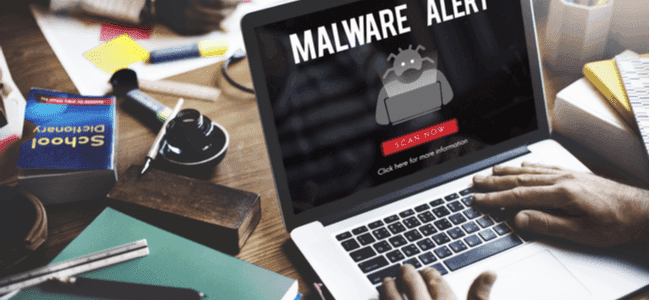The "Scareware" Trend And How To Tell Between It Apart From The Real Thing

You may have come across random pop-up messages that claim to have detected a virus. These messages then insist you buy or install anti-virus software. Ironically, these pop-ups may contain malware that’ll infect your computer if you open them.
These pop-ups typically fall under the “scareware” category. They could lead to costly repairs, identity theft, and other digital threats. In some cases, the affected computer might stop working altogether. Read on to learn how to recognize fake virus warnings and differentiate actual threats from scareware.
What Is Scareware?
Scareware is a kind of malware that’ll manipulate users and make them believe they need to install or buy software that’s usually malicious. They’re often initiated by a series of pop-up ads.
They then utilize the user’s fear of malicious content in order to manipulate them into installing unsafe software. This type of coaxing falls under the concept of social engineering.
The goals of these attacks can vary from one another. They can sometimes drive you to install fake and useless tools. Other times, they may even expose your sensitive data. These pop-ups usually lead to links that’ll forcefully download ransomware that could threaten your data security.
Common Examples Of Scareware
Hackers have been using scare tactics for quite some time. However, the advancement of tech has increased the potential of threats. Some of the most common examples of these attacks are:
- The 2010 Minneapolis Star Tribune website scareware that featured Best Western ads, which were typically not part of the actual ad campaign. This software sent users to fraudulent websites and infected their systems with malware. Readers also came across Windows support pop-ups that led them to buy unsafe anti-virus software for almost $50. The total amount scammed from victims was around $200,000
- In 2019, the FTC charged a $35 million settlement between Office Depot and Support.com (Office Depot’s tech-support vendor) for allegedly deceiving customers into downloading a free program called the PC Health Check Program. Although this wasn’t a regular case of scareware where end-users were robbed off of their money, it was considered as a scam by FTC because the companies deceived their customers and increased their business
Scareware Warning Signs
The primary step to protect your system is to identify the signs of these attacks. Here are some noticeable signs:
- The hackers who create this malware take advantage of the fear in people. The messages in scareware are very dire and will say things like, “the system is infected very badly with a ton of viruses.” Hence, if you come across menacing pop-ups like these, you must be cautious
- Speed is a significant factor that’ll support these scammers. These messages will typically be very rushed and would want you to act upon something immediately. The scammers will insist that you purchase the fake software quickly
- Pop-ups can be recurring and very difficult to close
- You’ll most likely have never heard about the brands or companies that are featured in these messages
- These programs will initiate unauthorized fake scans in your system and show you erratic results which will lead you to panic
Why Scareware Is Used Often?
A lot of scammers rely on this malware because it’s an effective way to steal financial data, trick people out of money, and place spyware. Since this tactic uses social engineering and feeds on panic, it’s easy to lure unsuspecting victims into clicking malicious links.
For instance, you keep receiving virus alerts and continuous pop-ups on your device. A warning message like this can send anyone into a panic.
Ways To Avoid Scareware
Here are some tips to help you avoid these attacks:
- Keep your security system updated all the time. This way, you can be assured of the protection factor
- Keep pop-up blockers up all the time. This will help you prevent unwanted pop-ups and fake notifications
- Keep your antivirus updated all the time. Invest in a legitimate package and run periodic scans to keep your system protected
- Don’t click on malicious pop-ups from unknown sources. You can always look up the source company on Google and find out if the pop-ups are legitimate
- Update your device OS as soon as it’s released
- Invest in a good antivirus that offers features like hardened browsers and protection from spyware, adware, and tracking
Bottom Line
Incorporating a premium antivirus program will always help you avoid unwanted threats. Be aware of the digital threats you could possibly face and always be cautious before proceeding to unsafe websites. There are tons of digital threats plotted all over the internet. The only way to beat them is to be aware and prepared.




